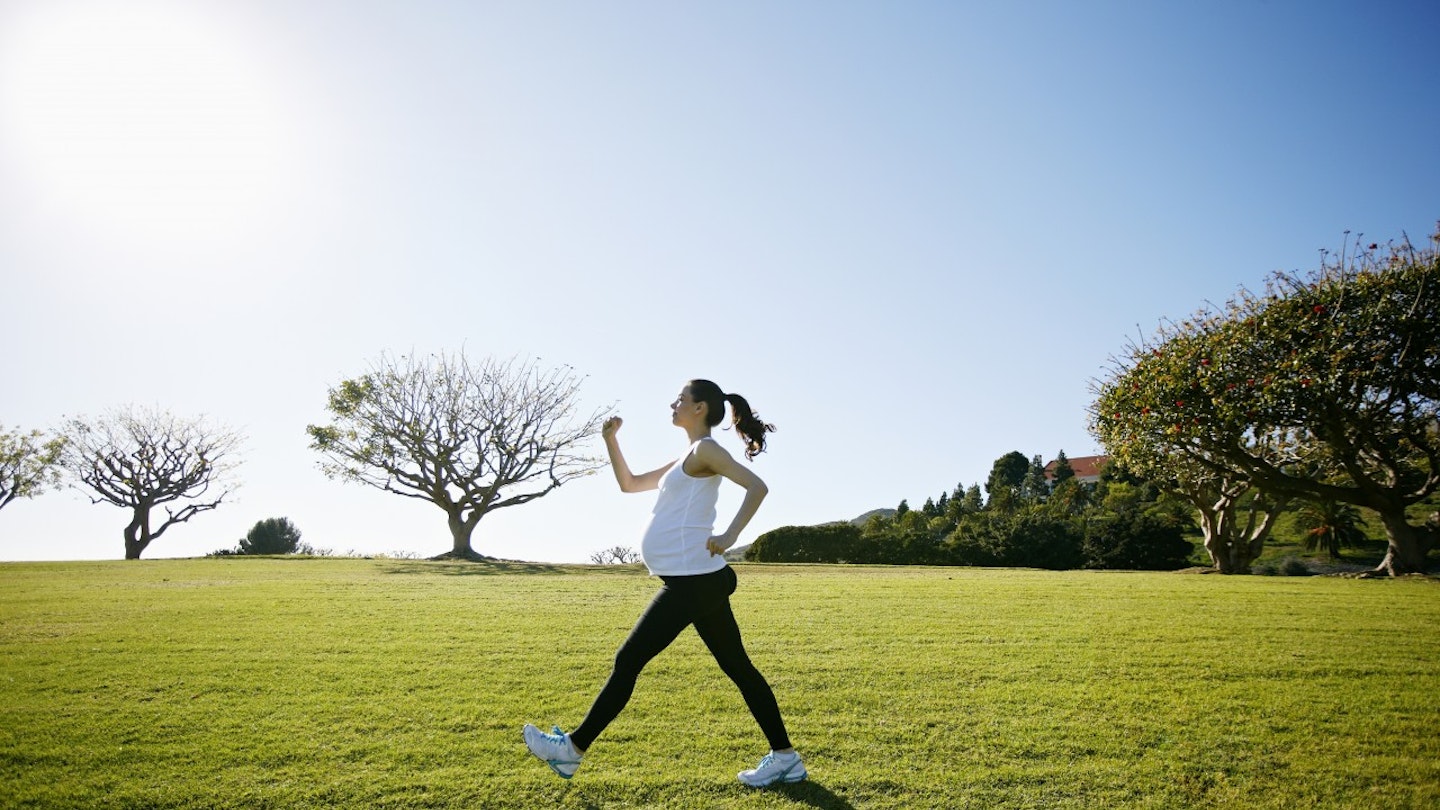Forget staying on the sofa with Netflix, now you’re pregnant there’s never been a better reason to keep active
You may have rang to cancel your gym membership pretty much as soon as you got the positive test, but actually pregnancy and exercise go together with well.
There are loads of benefits, including a better mood, fewer aches and pains, a smoother labour and a speedier recovering process. See what we mean?
There are loads of benefits, including a better mood, fewer aches and pains, a smoother labour and a speedier recovering process.
‘While there’s no such thing as a “one size fits all” fitness regime for your pregnancy, there are definitely some forms of exercise which work particularly well for the pregnant body,’ says pregnancy and postnatal fitness expert Dr Joanna Helcke.
It’s advised that you do a bit of both cardiovascular exercises with resistance and deep abdominal work. ‘The former will help give you the stamina needed to get through your nine month journey, especially towards the end when your baby is heavy,’ explains Joanna.
It’s also a good idea to do some core work to help your abs snap back into shape once you’re baby’s arrived – and it will help you with all of the baby-lifting you’ll be doing!
‘If you’ve been a regular exerciser pre-pregnancy, and as long as all is going well, there’s no reason why you can’t carry on during the first trimester with the exercise that you normally do,’ she says.
But it is important to not get too breathless, too hot or to push yourself to your limit – take it slowly and be sure to check with your GP if you’re regime is appropriate for your pregnancy before delving in.
1. Power walking
Who doesn’t love a spot of power walking? Forget any images of 80s shoulder pads and spandex, you can do it whenever and wherever. You can even mix it into your daily routine.
‘Power walking is ideal if you work at a desk, as it helps ease the tightness in the lower back,’ Joanna explains. ‘However, a significant proportion of mums-to-be suffer from pelvic girdle pain in pregnancy if you are one of them, then walking will need to be dropped in favour of other forms of exercise, such as aquanatal.’
2. Water-based exercise
There’s nothing better than being in the water when you’re pregnant – it makes you feel light as a feather, despite the weight of your growing baby. Plus, it’s great exercise and will help ease any third-trimester discomfort you’re feeling.
‘Try aquanatal with a trained specialist in pregnancy exercise,’ says Joanna. ‘Or if you can’t find a local expert, swimming is a great alternative.’
Again, if you’re suffering from pelvic girdle pain, be sure to modify your swimming accordingly. ‘Breaststroke is to be avoided at all costs but front crawl should be fine for you,’ Joanna advises.
3. Pregnancy Pilates
If you’re not already a fan of Pilates, now is the time to get loving it. As well as being a fun and stress-relieving workout, it’s an ideal way to limber you up for your baby’s birth.
Go to a class specially designed for the antenatal period and try to find one that includes postural work, as posture tends to be affected by pregnancy.
‘Regular sessions of Pilates will help to protect your back by keeping the deepest layer of abdominals toned,’ says Joanna. ‘Doing just one pregnancy Pilates class a week or even five minutes of every day will be enough to keep you free of many of the aches and pains that accompany pregnancy.’
In addition to enhancing your core strength, Pilates will improve your concentration and encourage you to focus on your breathing – all which are vital during labour.
What is your favourite pregnancy workout? Let us know below.
